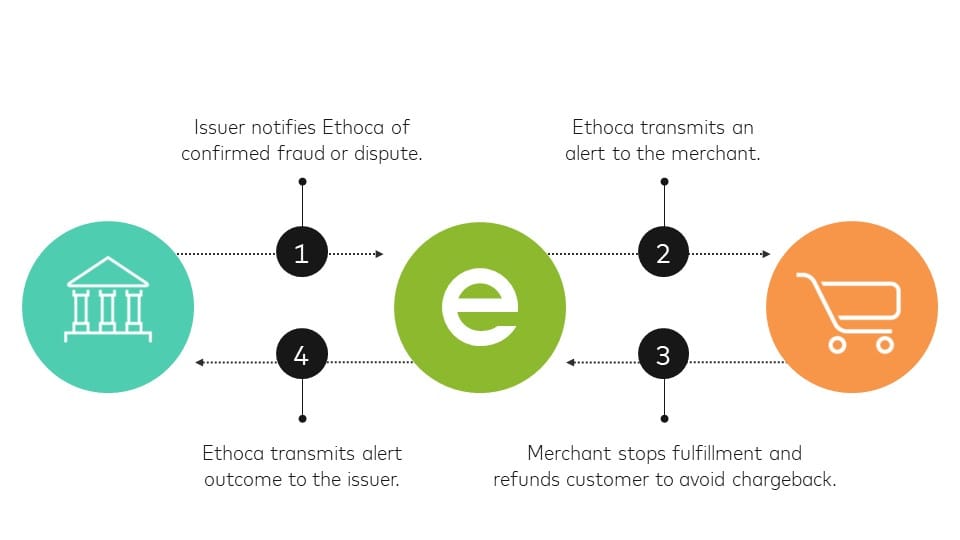
In today's fast-paced world, managing our finances has become increasingly convenient with the help of technology. One such convenience is the ability to set up and manage recurring payments, which allows us to automate our bill payments and avoid the hassle of manually paying our bills every month.
In this blog post, we will explore how to set up and manage recurring payments with Wells Fargo, one of the leading financial institutions in the United States. Whether you're looking to automate your mortgage payment, utility bill, or subscription services, Wells Fargo offers a seamless process to help you streamline your financial obligations.
We will start by understanding the basics of recurring payments and how they work. From there, we will guide you through the step-by-step process of setting up recurring payments through Wells Fargo's online banking platform. Additionally, we will also walk you through the process of setting up recurring payments using the Wells Fargo mobile app, making it even more convenient for you to manage your financial obligations on the go.
But it doesn't stop there - we will also provide insights on how to modify or cancel recurring payments if your financial circumstances change. Managing your recurring payments effectively is crucial to maintaining a healthy financial life, and we'll show you how to do it effortlessly.
Sometimes, issues may arise with recurring payments, such as failed transactions. Don't worry - we've got you covered. We will troubleshoot common issues and provide guidance on what to do when a payment fails. And if you ever find yourself in need of assistance, we will also discuss how to get help from Wells Fargo's dedicated customer service team.
Lastly, we will weigh the benefits and downsides of recurring payments, so you can make an informed decision on whether this payment method is right for you. While recurring payments offer convenience, it's essential to understand the potential risks and how to mitigate them effectively.
So, if you're ready to take control of your financial obligations and simplify your bill payments, join us as we dive into the world of setting up and managing recurring payments with Wells Fargo. Let's make managing your finances a breeze!
Understanding the Basics: What are Recurring Payments?
Recurring payments are a convenient and automated way to pay bills or make regular payments on a predetermined schedule. Rather than manually initiating each payment, recurring payments allow you to set up automatic deductions from your bank account or credit card, ensuring that your payments are made consistently and on time.
These types of payments are commonly used for various expenses, such as utility bills, rent or mortgage payments, subscription services, insurance premiums, and loan repayments. By setting up recurring payments, you eliminate the need to remember due dates and manually make payments each month, saving you time and effort.
When you set up a recurring payment, you authorize the payee, such as a utility company or service provider, to withdraw funds from your designated bank account or charge your credit card on a regular basis. The payment amount, frequency, and duration of the recurring payment are agreed upon between you and the payee.
It's important to note that recurring payments are different from one-time payments or scheduled payments. One-time payments are made for a specific amount and do not repeat automatically, while scheduled payments are set up for a specific date but require manual initiation for each payment.
Recurring payments offer several benefits, such as:
Convenience: Once set up, recurring payments ensure that your bills are paid automatically, saving you time and effort.
Avoiding Late Payments: By automating your payments, you reduce the risk of forgetting due dates and incurring late fees or penalties.
Financial Planning: With recurring payments, you can easily budget and plan your expenses as you know exactly when and how much will be deducted from your account.
Streamlined Record-Keeping: Since recurring payments are often electronic, you can easily track your payment history and access transaction details online.
While recurring payments offer convenience, it's important to be mindful of potential downsides and risks associated with this payment method. We will explore these in more detail later in this blog post.
Now that we have a good understanding of what recurring payments are and their benefits, let's dive into how you can set up recurring payments with Wells Fargo.
How to Set Up Recurring Payments with Wells Fargo
Setting up recurring payments with Wells Fargo is a straightforward process that can be done through their online banking platform or mobile app. To get started, you'll need to gather some necessary information and follow a few simple steps. Let's walk through the process together:
What You Need to Set Up Recurring Payments
Before you begin setting up recurring payments with Wells Fargo, make sure you have the following information and requirements on hand:
Wells Fargo Account: You'll need an active Wells Fargo checking or savings account to set up recurring payments.
Payee Information: Gather the payee's name, address, and account number. This information can typically be found on your bill statement or by contacting the payee directly.
Payment Amount and Frequency: Determine the amount you want to pay, as well as the frequency of payments (e.g., monthly, quarterly, annually).
Payment Start Date: Decide when you want your recurring payments to begin. This can be the current date or a future date, depending on your preference.
Payment Method: Choose the payment method you prefer, whether it's a direct withdrawal from your Wells Fargo account or using a Wells Fargo credit card.
Steps to Set Up Recurring Payments
Now that you have the necessary information, follow these steps to set up recurring payments with Wells Fargo:
Log In to Wells Fargo Online Banking: Visit the Wells Fargo website and log in to your online banking account using your username and password. If you haven't enrolled in online banking yet, you'll need to create an account first.
Navigate to the Bill Pay Section: Once logged in, locate the "Bill Pay" or "Payments" section within your online banking dashboard. This is where you will find the option to set up recurring payments.
Add a Payee: Within the Bill Pay section, select the option to "Add Payee" or "Manage Payees." Enter the payee's information, including their name, address, and account number. Wells Fargo may also have a list of pre-approved payees that you can choose from.
Set Up Recurring Payments: After adding the payee, select the option to "Set Up Recurring Payments" or a similar wording. Choose the payment frequency (e.g., monthly, quarterly) and the payment start date. Enter the payment amount for each recurring payment.
Select Payment Method: Choose the payment method you prefer, whether it's a direct withdrawal from your Wells Fargo account or using a Wells Fargo credit card. Enter the necessary account details or credit card information when prompted.
Review and Confirm: Double-check all the information you have entered, including the payment amount, frequency, and payment method. Once you're satisfied, review the terms and conditions, then confirm and submit your recurring payment setup.
Verification and Set Up Confirmation: Wells Fargo may require additional verification steps for security purposes. This could include confirming your identity through a phone call or SMS code. Follow the provided instructions to complete the verification process.
Congratulations! You have successfully set up recurring payments with Wells Fargo. Your payments will now be processed automatically according to the frequency and schedule you specified. Remember to ensure that you have sufficient funds in your account to cover the recurring payments.
In the next section, we will explore how to set up recurring payments using the Wells Fargo mobile app, providing you with even more flexibility and convenience.

Managing Your Recurring Payments
Once you have set up recurring payments with Wells Fargo, it's important to know how to effectively manage them. This section will guide you through the process of modifying and canceling recurring payments, ensuring that you have full control over your financial obligations.
How to Modify a Recurring Payment
There may be instances where you need to make changes to your recurring payment, such as adjusting the payment amount, changing the payment date, or updating the payment method. Wells Fargo makes it easy for you to modify your recurring payments through their online banking platform. Here's how:
Log In to Wells Fargo Online Banking: Visit the Wells Fargo website and log in to your online banking account using your username and password.
Navigate to the Bill Pay Section: Once logged in, locate the "Bill Pay" or "Payments" section within your online banking dashboard.
Access Recurring Payments: Within the Bill Pay section, find the option to "Manage Recurring Payments" or a similar wording. This will display a list of your existing recurring payments.
Select the Payment to Modify: Identify the recurring payment that you want to modify and select it from the list.
Make the Necessary Changes: Once you've selected the payment, you will have the option to modify various aspects of the recurring payment. This can include adjusting the payment amount, changing the payment date, or updating the payment method. Follow the prompts and enter the updated information.
Review and Confirm: Double-check all the modifications you have made to ensure accuracy. Once you're satisfied, review the terms and conditions, then confirm and submit the changes to your recurring payment.
Verification and Confirmation: Wells Fargo may require additional verification steps for security purposes, similar to the initial setup process. Follow the provided instructions to complete the verification process and receive confirmation of the modified recurring payment.
By following these steps, you can easily modify your recurring payments to accommodate any changes in your financial circumstances.
How to Cancel a Recurring Payment
If you no longer need a recurring payment or want to stop a particular payment, you have the option to cancel it. Here's how you can cancel a recurring payment with Wells Fargo:
Log In to Wells Fargo Online Banking: Visit the Wells Fargo website and log in to your online banking account using your username and password.
Navigate to the Bill Pay Section: Once logged in, locate the "Bill Pay" or "Payments" section within your online banking dashboard.
Access Recurring Payments: Within the Bill Pay section, find the option to "Manage Recurring Payments" or a similar wording. This will display a list of your existing recurring payments.
Select the Payment to Cancel: Identify the recurring payment that you want to cancel and select it from the list.
Cancel the Payment: Once you've selected the payment, you will have the option to cancel it. Look for the "Cancel" or "Delete" button and click on it.
Confirmation: Wells Fargo will prompt you to confirm the cancellation. Review the details of the payment you are canceling, then confirm the cancellation.
Verification and Confirmation: Similar to modifying a recurring payment, Wells Fargo may require additional verification steps for security purposes. Follow the provided instructions to complete the verification process and receive confirmation of the canceled recurring payment.
By following these steps, you can easily cancel any recurring payment that you no longer need or want to stop.
Managing Recurring Payments via Mobile App
In addition to managing recurring payments through Wells Fargo's online banking platform, you can also conveniently manage them using the Wells Fargo mobile app. The mobile app allows you to access your accounts and make changes to your recurring payments on the go. Simply download the Wells Fargo mobile app from your device's app store, log in to your account, and navigate to the Bill Pay or Payments section to manage your recurring payments.
In the next section, we will discuss common issues that may arise with recurring payments and how to troubleshoot them effectively.
Troubleshooting Common Issues with Recurring Payments
While setting up and managing recurring payments with Wells Fargo is generally a smooth process, there may be instances when issues arise. Understanding common issues and knowing how to troubleshoot them can help ensure that your recurring payments are processed smoothly. In this section, we will discuss some common issues that may occur with recurring payments and provide guidance on how to address them effectively.
Why a Recurring Payment May Fail
Insufficient Funds: One of the most common reasons for a recurring payment to fail is insufficient funds in your bank account. If you don't have enough money to cover the payment, it will be declined.
Expired or Invalid Payment Method: If the payment method associated with your recurring payment, such as a credit card or bank account, has expired or is invalid, the payment will not go through.
Changes in Payee's Account Information: If the payee changes their account information, such as a new bank account number or address, and you haven't updated it in your recurring payment setup, the payment may fail.
Technical Issues: Occasionally, technical glitches or system maintenance may cause temporary disruptions in payment processing, resulting in a failed recurring payment.
What to Do When a Payment Fails
If a recurring payment fails, there are several steps you can take to address the issue:
Check Your Account Balance: Ensure that you have sufficient funds in your account to cover the payment. If necessary, transfer funds or deposit money into your account to avoid future payment failures.
Update Payment Method: If the payment method associated with your recurring payment has expired or is invalid, update it with the correct and current information. This can be done through Wells Fargo's online banking platform or mobile app.
Verify Payee's Account Information: Double-check that the payee's account information, such as account number or address, is accurate and up to date. If there have been any changes, update the payee's details in your recurring payment setup.
Reschedule the Payment: If a temporary issue caused the payment failure, reschedule the payment for a later date to allow time for the issue to be resolved. Monitor your account and ensure that the payment goes through as scheduled.
Contact Wells Fargo Customer Service: If you have followed the above steps and the recurring payment continues to fail, reach out to Wells Fargo customer service for assistance. They can help troubleshoot the issue and provide further guidance.
Getting Help from Wells Fargo Customer Service
If you encounter any issues or have questions regarding your recurring payments with Wells Fargo, their customer service team is always available to assist you. Here are some ways to get help:
Phone Support: Contact Wells Fargo's customer service hotline for immediate assistance. You can find the phone number on their website or within your online banking account.
Live Chat: If you prefer an online chat option, Wells Fargo offers live chat support through their website. This allows you to communicate with a customer service representative in real-time.
In-Person: Visit a Wells Fargo branch near you and speak with a representative in person. They can address your concerns and provide personalized assistance.
When reaching out to customer service, be prepared to provide relevant information, such as your account details, the specific issue you are facing, and any error messages you have received. This will help expedite the troubleshooting process and ensure that you receive the necessary support.
In the next section, we will explore the benefits and downsides of recurring payments, giving you a comprehensive understanding of this payment method.
Benefits and Downsides of Recurring Payments
Recurring payments offer numerous benefits, making them an attractive option for managing your financial obligations. However, it's important to consider the potential downsides and risks associated with this payment method. In this section, we will explore the benefits and downsides of recurring payments, helping you make an informed decision about whether it is the right choice for you.
Why Recurring Payments Can Be Convenient
Time-Saving: By automating your bill payments, recurring payments save you the time and effort of manually initiating payments each month. This allows you to focus on other important aspects of your life.
Avoiding Late Payments: With recurring payments, you can ensure that your bills are paid on time, reducing the risk of late fees or penalties. This helps you maintain a good payment history and protects your credit score.
Financial Organization: By setting up recurring payments, you can better organize your finances. You know exactly when and how much will be deducted from your account, making it easier to budget and plan your expenses.
Convenience and Flexibility: Recurring payments offer convenience and flexibility, allowing you to set up payments for various expenses, such as utility bills, rent, subscriptions, and loan repayments. You have control over the payment frequency and can easily modify or cancel payments when needed.
Streamlined Record-Keeping: With recurring payments, you can easily track your payment history and access transaction details online. This simplifies record-keeping and eliminates the need for manual documentation.
Potential Risks and How to Mitigate Them
Insufficient Funds: One of the main risks associated with recurring payments is the potential for insufficient funds, resulting in failed payments and potential fees. To mitigate this risk, ensure that you have sufficient funds in your account or set up alerts to notify you of low balances.
Unauthorized Charges: There is a slight risk of unauthorized charges if someone gains access to your account information. To mitigate this risk, regularly monitor your accounts for any suspicious activity and report any unauthorized charges immediately to your bank.
Changes in Payment Amounts: If the payee increases the payment amount without your knowledge, it can lead to unexpected withdrawals from your account. Regularly review your billing statements and notify the payee or your bank if you notice any discrepancies.
Difficulty in Canceling Payments: In some cases, canceling recurring payments may not be as easy as setting them up. Ensure that you understand the cancellation procedure and have access to the necessary tools or assistance to cancel payments if needed.
To mitigate the risks associated with recurring payments, it is essential to regularly review your accounts, monitor your payment activity, and promptly address any issues that arise. Stay vigilant and maintain open communication with your bank and the payees to ensure the smooth management of your recurring payments.
By weighing the benefits and downsides of recurring payments, you can determine whether this payment method aligns with your financial goals and preferences. Remember to consider your personal financial situation, the reliability of the payee, and your comfort level with automation in financial transactions.
In conclusion, recurring payments can offer convenience, time-savings, and financial organization. However, it's crucial to understand and mitigate the potential risks involved. With careful consideration and proactive management, recurring payments can be a valuable tool in simplifying your bill payments and enhancing your financial well-being.


